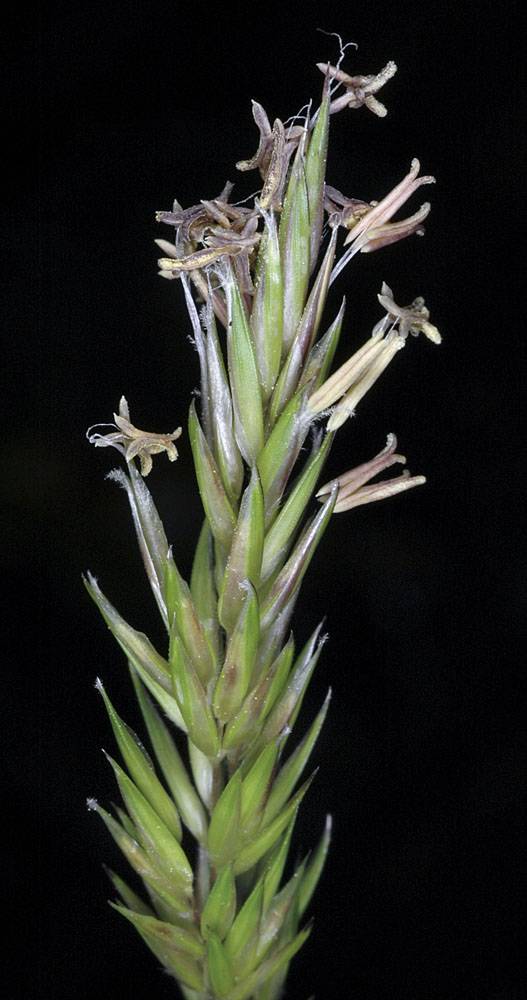Anthoxanthum odoratum
sweet vernalgrass
erect or ascending.
auricles 0.5–1 mm, pubescent;
ligules 2–7 mm, truncate;
blades 1–31 cm × 3–10 mm.
dense; spike-like; (3)4–14 × 0.7–1.8 cm, often widest near the base; lowest branches 1–2.5 cm.
6–10 mm.
unequal, exceeding the florets;
lower glumes 3–4 mm, 1(3)-veined;
upper glumes 7–10 mm, 3-veined.
lower 2 staminate, 3–4 mm, pubescent;
tips awned;
lemma awns of lowest lemma about 3 mm, arising near or above mid-length; straight or bent, those of the second lemma 7–10 mm, arising near the base; bent and twisted, equaling or slightly longer than upper glumes; upper lemmas bisexual, 1–2.5 mm; hard, glabrous, brown;
tips acute; awnless.
(2.9)3.5–4.8(5.5)mm.
=10, 20.
Anthoxanthum odoratum
Meadows, roadsides, waste places, openings in coniferous forests, occasionally in dense shade. 0–1700m. BW, Casc, CR, ECas, Est, Sisk, WV. CA, ID, WA; scattered throughout North America; worldwide. Exotic.
This abundant weed of grasslands blooms early in the spring and is recognized by its dense, pointed spikes. Similar A. aristatum is an annual with proportionately longer awns.
Barbara Wilson, Richard Brainerd, Nick Otting
- Local floras:
BC,
CA,
OR,
WA
- Local Web sites:
CalFlora,
CalPhotos,
Flora NW,
PNW Herbaria
WildflowerSearch
iNaturalist (observations)
USDA Plants Database
- LBJ Wildflower Center
- SEINet
- Plants of the World Online
- Encyclopedia of Life
- Wikipedia
- Google Image Search



